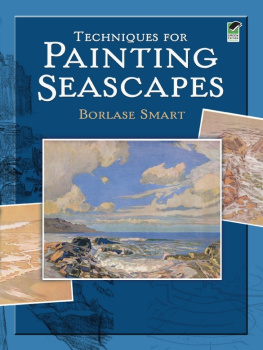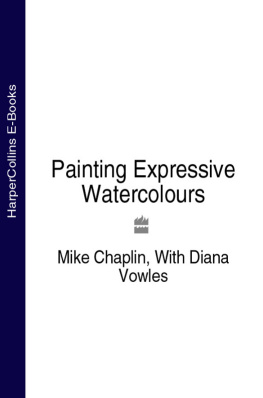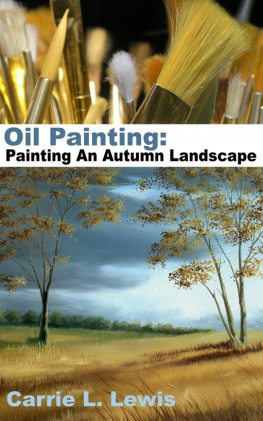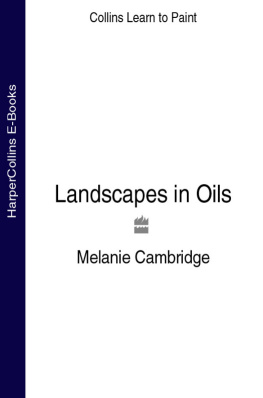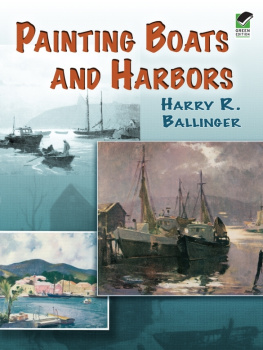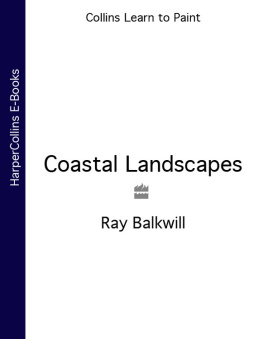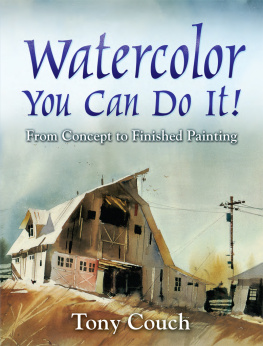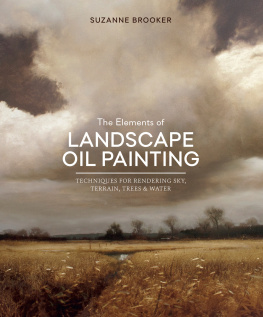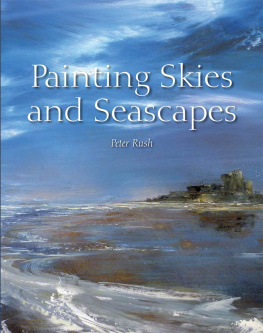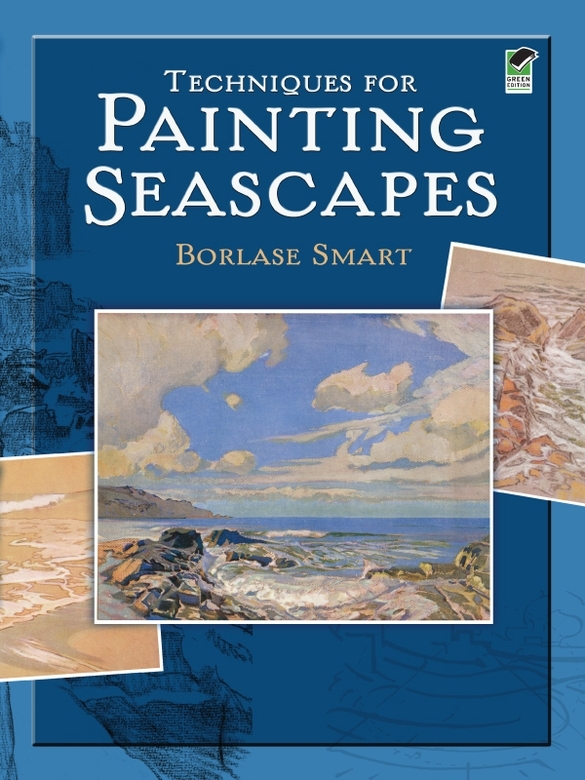APPENDIX
The Proper Framing of a Picture
THIS note is devoted to the subject of picture framing, which has an important bearing on the complete presentation of a picture, and has been written to stimulate interest in an artistic necessity that is an all too long neglected part of Art Trainingthe choice of a suitable frame; that is, a frame that harmonizes in tone and in design with the character of the picture for which it is intended.
Certain works usually stand out with definite artistic value even during the period of early training of the young artist. These may ultimately be judged worthy of a frame. It is just as well that in the early stages some thought should be devoted to this matter, so that the artistic mind can become tuned up to appreciate this last stage, and its direct consequences to the picture. Frames are the windows of the home through which the beholder views Nature as represented by the pictures enclosed in them.
The windows of a house should be in proportion not only to the particular frontage, but to the size of the rooms. The framework of a window should also be of some aesthetic value, so that, while a view may be admired through it, the framework may act as an appreciable factor as a setting. These principles can in a general way be applied to the framing and hanging of a picture.
The choice of frames, while depending on the individual selection and temperament of the artist or purchaser, provides an interesting subject for consideration. No laws can be laid down as to how a picture shall be framed because of this varying individual taste. It is interesting to note, however, that the art of the framer has been brought to such a pitch of perfection in these days, that some firms have earned the right to act as advisers as to how pictures should be framed. This is most helpful to those who cannot visualize the final effect when a sample piece of moulding, or a mitred corner, is held against the canvas. I know of one or two firms in this respect with whom artists can leave their pictures with the confidence that the final result will be all that can be desired. Their experience is of great service to the artist. It must be admitted that the question of expense is an important factor in these days of economy. But there is a variety of British mouldings on the market to-day of high artistic and distinctive quality, and at a price within the reach of even the limited purse of the majority of artists.
There is definitely no excuse, therefore, for a badly framed picture. The astonishing thing is that so many artists seem to feel that their responsibility ends with the last stroke of the brush, when signing their work. At leastand I speak as one who has been on many adjudicating committees in the Art World that has been my experience. Pictures are sent or submitted to Exhibitions in frames that happen to fit, no matter how unsuitable to the particular work. Oil-paintings are sent in black or dark coloured mouldings of polished wood, possibly with a view to force up the colour or subject. In reverse, white or cream enamel frames are sometimes seen, perhaps with the same end in view, especially where the subjects are devoted to Still Life. The latter type might serve as a temporary expedient in a one-man show where general harmony is aimed at. In this latter case is the white frame suitable to the home of to-day, unless that home is correspondingly decorated to match?
The unsuitability of such frames is always apparent, and they certainly provide a veritable bone of contention to the hanging committee of a public gallery or exhibition.
I do not, of course, refer to black and white drawings, etchings, and engravings, which naturally occupy a category by themselves.
Paintings in such dark mouldings as I have described have a tendency to make the walls of the ordinary house top heavy, to diminish the size of the rooms, and create a feeling of being over-furnished. Pictures should be happy in colour and outlook and brighten up the home. The frames, therefore, should play their part in the scheme and be correspondingly harmonious. Fortunately, the days of English gilt are over from a practical point of view. The rough handling of exhibition frames of this type, and the soiling of the sensitive gold leaf by contact with the fingers, played a part in its gradual elimination as a practical proposition in the exhibition world. Another feature was the offence, from an aesthetic standpoint, of the glittering mouldings and chopped-up effect of the egg and tongue pattern of the very late Watts frame; to say nothing of the English gilt frames, and English gilt cut-out mounts for water-colour drawings of the late Victorian period. Their transition through the white cut-out mounts with gilt bevelled edges, to the handsome white and delicately lined and tinted ones, with beautiful frames to tone of to-day, has provided a most interesting study. The resultant effect in an exhibition of water-colour drawings at the present time is a toning up of such a collection and a happier harmony generally. This is also conducive to sales.


A picture is a decoration based on the lines of composition in Nature. This is especially so in seascape painting. Such subjects should be framed in ding moulding. That is to say, the relief is highest near the picture, and gradually falling back to the outside edge. The tendency is to throw the interest of the work forward, and, most important of all, it eliminates heavy cast shadows on the walls of a room or gallery! This is especially helpful in the ordinary home, where the lighting is from the side. The type of moulding with the recession towards the picture may look well, consistent with good hanging , in a gallery, because of the likely juxtaposition with other similar frames. In the home, however, cast shadows, especially under artificial light, should be eliminated as much as possible. In this respect picture rings should be placed as near the top of the frame as possible, to keep the picture flat against the wall. The result will be a more dignified and restful wall filling. It will also tend partially to eliminate reflections in the glass. One sees sometimes pictures hanging where the rings have been placed one-third the distance down the frame. The work, responding to its centre of gravity, pitches forward and looks as if it were falling off the wall. Glazed pictures so hung tend to reflect the objects in a room, especially under artificial light.
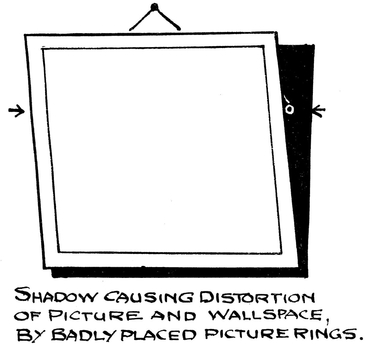
There are firms to-day who specialize in mouldings modelled and coloured to harmonize with any type of picture, and they are not expensive. I have, however, found some of the cheaper foreign Antique Gold Metal Leaf designs go dark with age, and oxidize rapidly in impure atmosphere, or in the salt air of the seaside. A frame can certainly make or mar a work. It can prevent its acceptance in an exhibition, and certainly has an effect upon a purchaser. It is not every patron who is prepared to reframe a Work of Art at his or her own expense. It is interesting to note that in the days of the Old Masters the art of picture-frame making was veritably a classic one. Some of the wonderful frames produced in those early days competed in price with the pictures to be framed. The colour harmony of the Old Masters is traditional; the frames around them are equally so. The artist of to-day is realizing the importance of this harmony of framing, and manufacturers have been responsive. The result is a quickening of its aesthetic value to the home, and in its wider senseto our public galleries.

